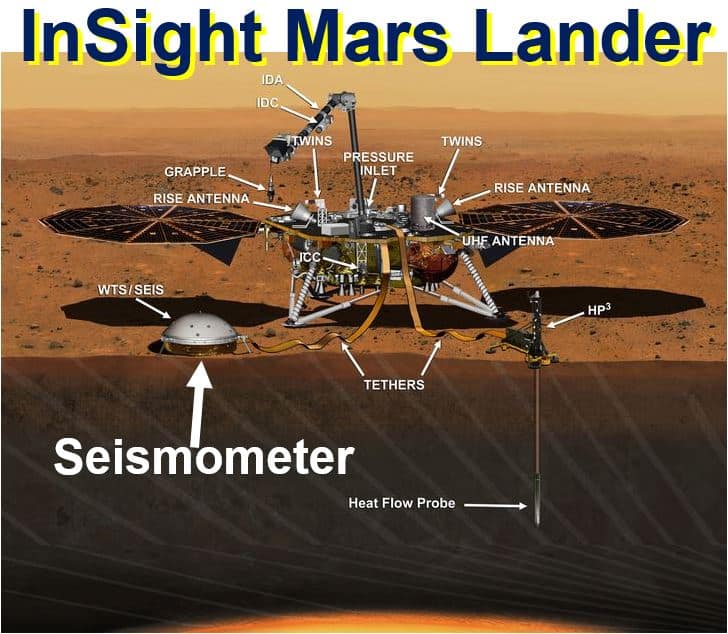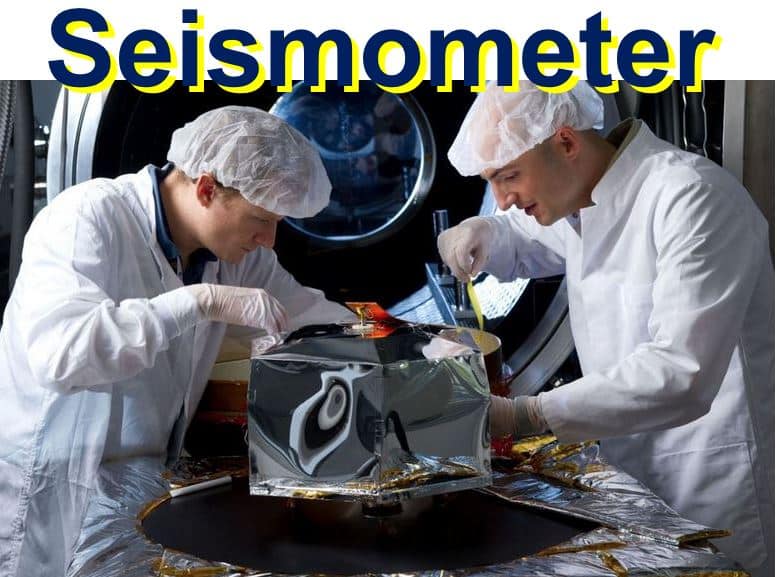NASA is rescheduling its Insight Mars lander launch until May 2018 – twenty-six months later than the March 2016 sendoff that had originally been planned, because of leaks detected in its seismometer in December 2015.
In fact, the US space agency in December had considered calling off the whole mission.
The seismometer, built by the Centre National D’Etudes Spatiales (CNES), France’s space agency, will be fixed in time to be ready for the 2018 launch date, said head of NASA’s planetary science’s division in Washington DC, Jim Green.
 This artist’s depiction of NASA’s InSight Mars lander fully deployed for studying the deep interior of Mars. (Image: NASA/JPL-Caltech)
This artist’s depiction of NASA’s InSight Mars lander fully deployed for studying the deep interior of Mars. (Image: NASA/JPL-Caltech)
On 9th March, Dr. Green said to a planetary sciences advisory panel: “That’s terrific news.”
New vacuum enclosure to be built
A new vacuum enclosure for the seismometer will be built by the Jet Propulsion Laboratory in Pasadena, California.
In order to operate properly, the seismometer has to be in a quasi-vacuum so that it can withstand the extremely harsh conditions of Mars’ environment. The air pressure cannot exceed one-thousandth of a millibar – about one millionth of the Earth’s atmospheric pressure at sea level.
The delay will incur costs for NASA, which said the money required to continue the mission will come from its planetary sciences budget. It did not say how much it expects the extra expense will be.
Dr. Green did not say how much it might affect other missions under development in the Discovery class. The Mars InSight mission is estimated to cost $425 million.
 CNES engineers working on the seismometer SEIS in 2014. (Image: https://cnes.fr)
CNES engineers working on the seismometer SEIS in 2014. (Image: https://cnes.fr)
Several Discovery ideas under consideration
Five Discovery ideas are currently being considered by NASA, including missions to asteroids and the planet Venus. The Agency says it will choose one or more later this year, for launching some time in the early 2020s.
As NASA has not been flying Discovery missions as often as it had previously hoped, Dr. Green has been considering whether to select two proposed missions from the current list.
Alexandra Witze writes in Nature News that all five are currently undergoing ‘Phase A’ studies, which include detailed engineering analysis in order to be able to estimate costs.
Dr. Green said:
“We can only know if we can select more than one based on the Phase A studies. At that point we will have the information necessary.”
We should know what the numbers are later this year.
InSight is in storage in Denver, Colorado, at Lockheed Martin Space System, the company that made the spacecraft.
InSight’s mission is to study the interior of the Red Planet using the seismometer to monitor marsquakes (tremors on Mars) ringing through the planet.
The ultra-small seismometer will be placed on the surface of the Red Planet to listen for faint rumblings through its crust. It is designed to detect and measure ground movement as tiny as the diameter of just a single atom.
If all goes according to the new plan, the spacecraft will lift off in May 2018, and touch down on Mars’ surface in November 2018.
In December last year, John Grunsfeld, associate administrator for NASA’s Science Mission Directorate in Washington, said:
“Learning about the interior structure of Mars has been a high priority objective for planetary scientists since the Viking era. We push the boundaries of space technology with our missions to enable science, but space exploration is unforgiving, and the bottom line is that we’re not ready to launch in the 2016 window.”
“A decision on a path forward will be made in the coming months, but one thing is clear: NASA remains fully committed to the scientific discovery and exploration of Mars.”
InSight Principal Investigator, Bruce Banerdt, said:
“InSight’s investigation of the Red Planet’s interior is designed to increase understanding of how all rocky planets, including Earth, formed and evolved. Mars retains evidence about the rocky planets’ early development that has been erased on Earth by internal churning Mars lacks.”
“Gaining information about the core, mantle and crust of Mars is a high priority for planetary science, and InSight was built to accomplish this.”
Video – Animation of InSight Mars Lander
This NASA animation was published in 2013.
